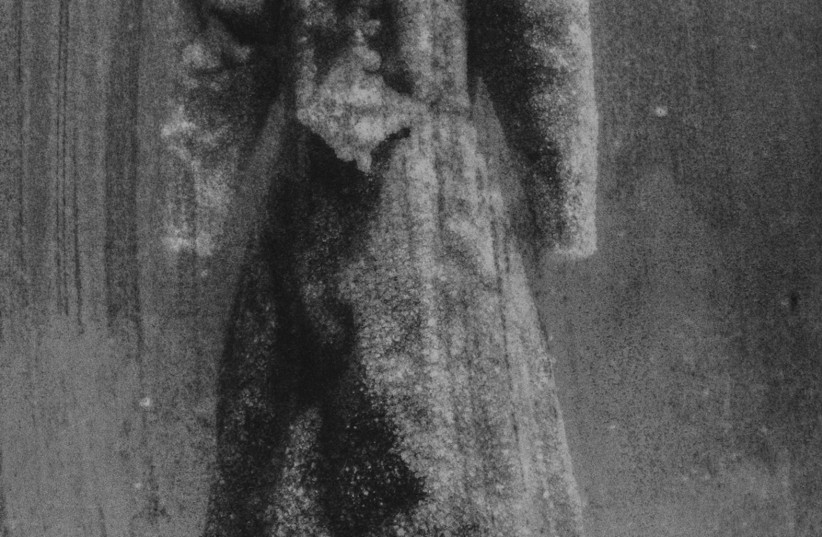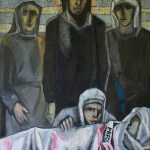
New exhibits have been added that bring attention to the Haifa Museum of Art.
By BARRY DAVIS The Jerusalem Post
Published: AUGUST 9, 2022 22:56
Museums, by definition, are bastions of culture, the arts in general, across an ever-widening range of disciplines and schools of thought. People flock to them all over the world, enter their cloistered confines brimming with anticipation as they head to some new exhibition that may have been trumpeted in the media, or possibly just decide to amble their way around the display halls catching exhibits randomly.
Either way, there is something of a dichotomy in that experience. As culture consumers, we look for sources of inspiration, excitement, thrills and aesthetics, and something that might prod our brain and leave us with something to mull over when we return to our everyday life.
But, surely, placing works of art inside a building, in a crafted setting, presents curators, artists and the public with a basic conundrum. In such circumstances what happens to the art-feeds off-life – and, possibly, vice versa – relationship?
The exploration
Kobi Ben-Meir is very much aware of that sticking point. That is evident from the off as we begin our tour of the Haifa Museum of Art, last Thursday, just hours before the official opening of five new exhibitions. “There is a short trail of works by artists from Wadi Nisnas,” says the head curator referencing the adjacent neighborhood which was home to Arab and Jewish Haifaites for decades, and still has a number of Jewish residents.
‘Salt Wedding’ (credit: SIGALIT LANDAU)
The first painting that catches the eye is a self-portrait by Abed Abdi. The title, “Shadow in Wadi Nisnas (Portrait of the Artist upon Turning Eighty),” tells the whole background story.
I immediately got the locale narrative that runs through the entire museum, and fuels much of its output thinking. “That is our aim,” Ben-Meir explains. “We want to see how art is connected to this specific place, and this particular spot.”
The museum sits neatly at the nodal point between sections of the highly nuanced sociopolitical mosaic that makes up Haifa. “Just to the right we have Hadar, which has a large proportion of blue-collar workers, and a lot of people from the former Soviet Union,” Ben-Meir notes. “We want to reflect that complexity here. So the first station, for us, is Wadi Nisnas, which is right here.”
“We want to see how art is connected to this specific place, and this particular spot.”
Kobi Ben-Meir, head curator

The museum’s architecture
The Haifa museum occupies a building of far more intimate dimensions than, say, the Tel Aviv Museum of art and, certainly, the expansive Israel Museum in Jerusalem. However, it does have a DNA advantage in its bio, palpably conveyed in the “My Playground” installation by Nardeen Srouji. Srouji, who was born in Nazareth but is now based in Haifa, dug – literally – into the building and its history, specifically the time when it served as an Anglican school for girls, in the 1930s.
The far wall of the top floor spread features two windows that appear to have been ripped out of the structure’s shell. The apertures reveal the outside world, the real world beyond the confines of the art repository, and seem to have been created by some superhero or, at the very least, someone of immense physical strength. The stratified passing of the years since the building was opened, close to a century ago, is indicated by the layers of images that have seemingly been peeled away from the wall that bears witness to the unfolding of time.
There is an almost insouciant playfulness to the layout, which also includes stock exhibit pedestals that have been battered about and pillars that start out as one might expect but morph into something that looks like piles of papers or files. But it is not all fun and games. Srouji is clearly challenging the accepted concept of the school, the museum, and the basic principle of the physical structure and the inside-outside balancing act.
Indeed, thought-provocation and querying perfectly acceptable norms appear to be the name of the game right across the new exhibitions. Mind you, not all pertain to the here and now. When Ben-Meir stepped into the head curator role last year, he immediately began exploring the museum’s stockpile of over 8,000 works held in storage there. Hence the Northern Wind: Israeli Art from the Museum’s Collection on the second floor.
The art
There are gems in there that reference some of the major departures in Israeli art. The Ori Reisman abstract, “View of the Jordan Valley from the mid-1970s” is an impressive case in point, as is the Michael Gross diptych “Blue Dawn,” from 1971. Haifa has historically been known as a workers’ town, and the local sociopolitical zeitgeist is front and center in such exhibits as Gershon Knispel’s large oil painting, from 1956, called “The Employment Bureau”. It depicts a motley line of job seekers that include an unemployed Arab laborer, an elderly religious Jew, an Oleh from North Africa, and various other flat-capped figures.
The dystopian scene is augmented by the inclusion of a barefoot Arab girl dressed in rags, holding a toddler. “The Wadi Salib riots [by Mizrahi olim] occurred three years after this painting was made,” Ben-Meir notes, “which makes this a little prophetic.” The social distress spirit is also patently imparted in Dov Or-Ner’s video work, “Peace Cage,” from 1975, and Anna Lukashevsky’s “Katja (A Single Mother)” an oil painting from just last year.
Intercultural interfaces and issues of identity filter through Mahmoud Kaiss’s sculpted and partly disfigured oud. In reshaping the instrument, and introducing a sense of violence, Kaiss addresses feelings of detachment and the seemingly unbridgeable divide between East and West.
Whimsy and absurdity appear to be the order of the day in Oded Hirsch’s string of video works which document various laborious exercises that have no perceivable rhyme or reason to them. “The Tractor” has a group of men, some way past their physical prime, making a supreme effort to disinter the eponymous piece of machinery from the earth.
The choice of monochrome film, and unusual camera angles, raises specters of Soviet propaganda films made in the 1930s. The questionable nonsensical factor rises several notches when you come across the actual tractor in another room of the museum.
“It was crazy to get this in here,” says Ben-Meir. “It was so complicated, in terms of bureaucracy and physically get it here. But, somehow, everyone involved had a sense of achievement, and of successful collaboration, when we finished.” Perhaps there is an across-the-board creative message in there.
Other not-to-be-missed offerings currently showing at the Haifa Museum include the Hard and Soft showing of contemporary Israeli prints from the Gottesman Etching Center, at Kibbutz Cabri near Naharya. Items of particular interest include Jan Rauchweger’s “Cats”, “Self-portrait” by Raanan Levy and “Salt Wedding” by Sigalit Landau. There are plenty of delectable works to be viewed in Storm and Stress – Early 20th Century German Prints, too.
You might want to round off your circuit of the museum with something a little more tangible. If that is the case, “North Window” and its corporeal portrayal of the movement of air should do the trick.
Tags Haifa museum art Exhibition




















